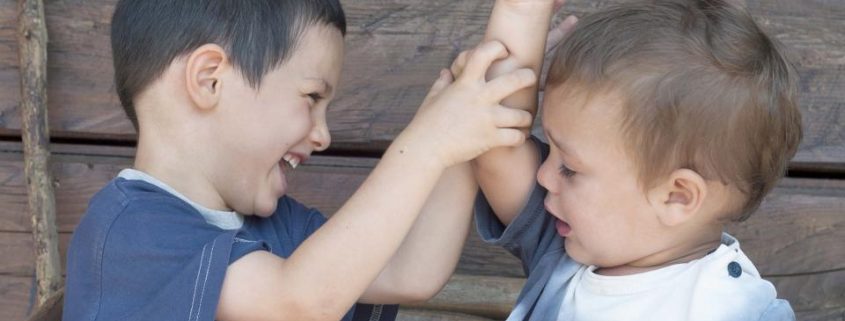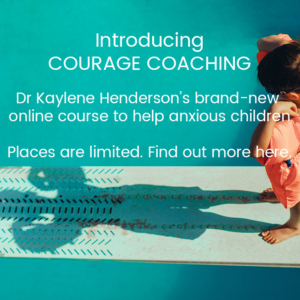Guiding Young Children’s Behaviour
“We are all more likely to do good when we feel good”
Whenever I reflect on times in my life when I haven’t been terribly well behaved, I’m reminded of the truth in this statement. Our emotions tend to have a significant influence on our behaviour choices. So it seems important to start a discussion about behaviour guidance in young children with the same motto, since children find the same to be true.
When infants and young children are upset, frightened, worried or stressed, their natural instinct is to turn to us for comfort. How we then respond to this need for comfort will, in part, determine the events that follow. We know from neuroscience research that children calm down most effectively when we make an effort to connect with them and respond to them with empathy.
An example of such a response might be, “I can see that you’re feeling sad that Daddy has to leave now. You wish he could stay – I understand. How about you stick with me until you’re feeling better.”
Alternatively, if we choose to distract a child, with no acknowledgement of her feelings, or if we instead provide an explanation of how unfounded her distress is (however logical this may seem to us), the child’s feelings of distress will actually last longer. Importantly, if this pattern is repeated often enough, the child will also learn that there is little benefit in seeking our help when she feels upset. And what happens when the same pattern is established with each of the children in your care? You may find yourself working with children who are often upset for protracted periods of time, feeling that they have no-one to go to for help to calm down.
Some may demonstrate this by withdrawing from you and their peers, unable to engage in activities and learning for a while. Others may act out, hurting their friends, damaging toys or yelling.
While this is an overly-dramatic example, you can see how easy it might be to get stuck in a pattern of reacting to children’s behaviours rather than responding to their underlying emotional needs.
Remember, “we are all more likely to do good when we feel good”.
One of the most important things you can do when you are trying to improve children’s behaviour is to teach them that they can come to you when they’re feeling upset and that you will help them to calm down, before their feelings get too big for them to handle. By taking this approach, you will not only prevent many unwanted behaviours, but you will also strengthen your relationships with the children in your care. These strong, respectful relationships will, in turn, provide a range of added benefits to each individual child and to your group as a whole.
But what about those children who seem to present with challenging behaviours in spite of your efforts to help them to regulate their feelings?
In these situations, it helps to be curious about what might be happening for these children to behave in this way.
Perhaps he’s hungry? Tired? Stressed as a result of the fights his parents are having at home?
Maybe he’s frustrated by his speech delay – he has so much to say and doesn’t seem to be able to get the words out clearly.
Perhaps she’s finding it hard to read other people’s social cues and needs for someone to bring her parents’ attention to her struggles, so that they can seek appropriate help for her.
Perhaps she’s been taught at home that hitting and yelling are reasonable strategies when feeling frustrated with someone’s behaviour.
The reality is, there isn’t one reason why children present with challenging behaviour. Just as there isn’t a sole reason why we are sometimes not at our best. With this understanding, it follows that there is no effective one-size-fits-all strategy for addressing children’s challenging behaviours. The approach for the behaviour of a hungry toddler who has been brought to your centre having not eaten breakfast cannot be the same as for a frustrated, speech delayed preschooler who is being teased by his peers. In both of these examples, each child has a different problem and as such, will require a different solution.
That’s not to say there is no helpful approach to guiding children’s behaviour; Only that there is not one helpful approach. In fact, there are many helpful strategies and practical activities that you can use to guide children’s behaviour in your centres. Indeed, an important part of your role is to teach children socially appropriate behaviour. And just as you use a variety of helpful approaches to teach children other new skills such as counting or letter recognition, the same concept applies – there are many strategies for teaching children to behave in socially appropriate ways.
Never forget, you are an educator teaching children important life skills. So do what you do best! Develop strong relationships with children so that they know that they can come to you, however they’re feeling; Then teach them how to treat themselves and others in ways which will set them up for success, not only in your centre but all throughout their lives.
Strategies for success…
To learn practical strategies for guiding children’s behavioural learning in ECEC settings, here’s the link to her new, video-based masterclass.
Or sign up for her highly regarded online course series for educators, ‘Raising Good Kids: Managing Behaviour and Emotions in Early Childhood Care and Education Settings’.
Together, we can bring out the best in the children for whom we all care.



